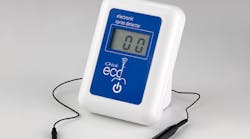New Article
By Bruce R. Brown, DDS
There is a story that goes like this: When ships first arrived from Europe, the people who lived in the Americas literally couldn't see the ships because they had never seen anything like them. The other story about this time explained how the natives could not recognize that a person on a horse was actually two different creatures; they thought it was one. Now for sure they could “see” what was there, they just didn’t recognize what their eyes perceived. Although it was right in front of their eyes, they couldn’t connect it with anything they had ever seen before.
The same is true for the art and science of diagnosis. Although all the signs point to a specific diagnosis, unless it is in our mental library of possibilities, we will not recognize or “see” the answer.
As an endodontist, I frequently see patients who present with a complaint of toothache without any dental pathology at all. Tired of telling the patient that it wasn’t the tooth in question without other suggestions as to what was causing the discomfort, I sought training in TMD/orofacial pain diagnosis and management. Armed with this new knowledge made it easier to offer patients some possible explanations for their pain.
The diagnosis of oral pain is a constant challenge. The patient’s medical history, dental history, and psychological state may contribute to the diagnosis. Using radiographs, thermal testing, percussion, palpation, occlusal sensitivity, and electric pulp testing, the clinician can frequently isolate the origin of the patient’s pain and arrive at a diagnosis. Pain must be considered in terms of quality, duration, temporal pattern, exacerbation, and relief. When patients present with diffuse pain, pain radiating to other areas, and/or pain in an area devoid of any obvious pathology, nonodontogenic sources should be given consideration.
Although the overwhelming majority of dental pain is odontogenic in origin, a significant percentage is nonodontogenic. This must be considered in the differential diagnosis. Toothache of nonodontogenic origin is not true dental pathology; rather, it is pain referred into the dentition from a distant location. All etiologies must be evaluated on an individual basis, bearing in mind that occasionally more than one cause can contribute to the symptoms.
A significant cause of referred pain into the dentition is activation of a myofascial trigger point.
Travell and Simons characterize myofascial pain as a regional dull, aching muscle pain, and the presence of localized tender sites (trigger points) in muscle that can refer to distant sites.1
Trigger point characteristics
- Taut band within muscle that when palpated produces a regional referred pain and/or autonomic symptoms.
- Trigger point may be active or latent. A latent trigger point is one that, although always present, does not cause any symptoms.
- A trigger point may be caused by overstretching or overcontracting a muscle. Examples include ...
- Work posture
- Carrying heavy shoulder bags
- Lack of posterior stops, such as loss of posterior dentition or collapsed vertical dimension caused by attrition or parafunctional habits.
- Palpation of an “active” trigger point causes reproducible pain to a more extensive area. This may or may not include the muscle containing the trigger point.2
Travell and Simons3 mapped out referral patterns of trigger points. Several apply directly to the oral cavity and dentition:
- Masseter: a trigger point at the zygomatic origin can refer pain into the maxillary posterior teeth. This is one of the most common causes of maxillary “toothache.” A trigger point at the angle of the mandible can refer pain into the mandibular posterior teeth.
- Medial pterygoid: the pain referral pattern here is similar to the master at the angle of the mandible. It can also cause the complaint of a “sore throat” or pain when swallowing.
- Temporalis: the anterior temporalis can refer pain into the maxillary anterior teeth.
- Trapezius: the trapezius muscle can refer pain into the angle of the mandible and into the area of the ear.
Nonodontogenic sources should be considered when diagnosing oral pain. Patients complaining of diffuse pain, whose etiology cannot be determined by standard testing and radiographic examination, should be given a thorough myofascial examination to determine possible nonodontogenic origins. Recognizing myofascial pain can provide not only a valuable service to patients, but in some cases avoid unnecessary procedures.
Author bio
Bruce R. Brown, DDS, graduated from New York University College of Dentistry in 1975. He spent one year in a general practice residency and two years in an endodontic residency at the Manhattan Veterans Hospital, where he received his certificate in endodontics in 1978. From 1995 to 1997, Dr. Brown was enrolled at New York University College of Dentistry where he studied the diagnosis and management of TMD/orofacial pain disorders. He was examined and certified diplomate by The American Board of Orofacial Pain. Dr. Brown spent several years teaching in the TMD/Orofacial Pain Center at New York University and endodontics at Stony Brook University. Dr. Brown is a member of the American Dental Association, the Dental Society of the State of New York, the Suffolk County Dental Society, the American Association of Endodontists, the American Pain Society, the American Academy of Orofacial Pain, and the American Headache Society. He practices endodontics and the diagnosis and management of temporomandibular disorders and orofacial pain in Port Jefferson Station, N.Y.
References
1. Travell J, Simons D. Myofascial pain and dysfunction: the trigger point manual, the upper extremities. Baltimore: Williams and Wilkins, 1983; 1:1912.
2. Travell J, Simons D. Myofascial pain and dysfunction: the trigger point manual, the upper extremities. Baltimore: Williams and Wilkins, 1983; 1:13-14
3. Travell J, Simons D. Myofascial pain and dysfunction: the trigger point manual, the upper extremities. Baltimore: Williams and Wilkins, 1983; 1:184-272.

